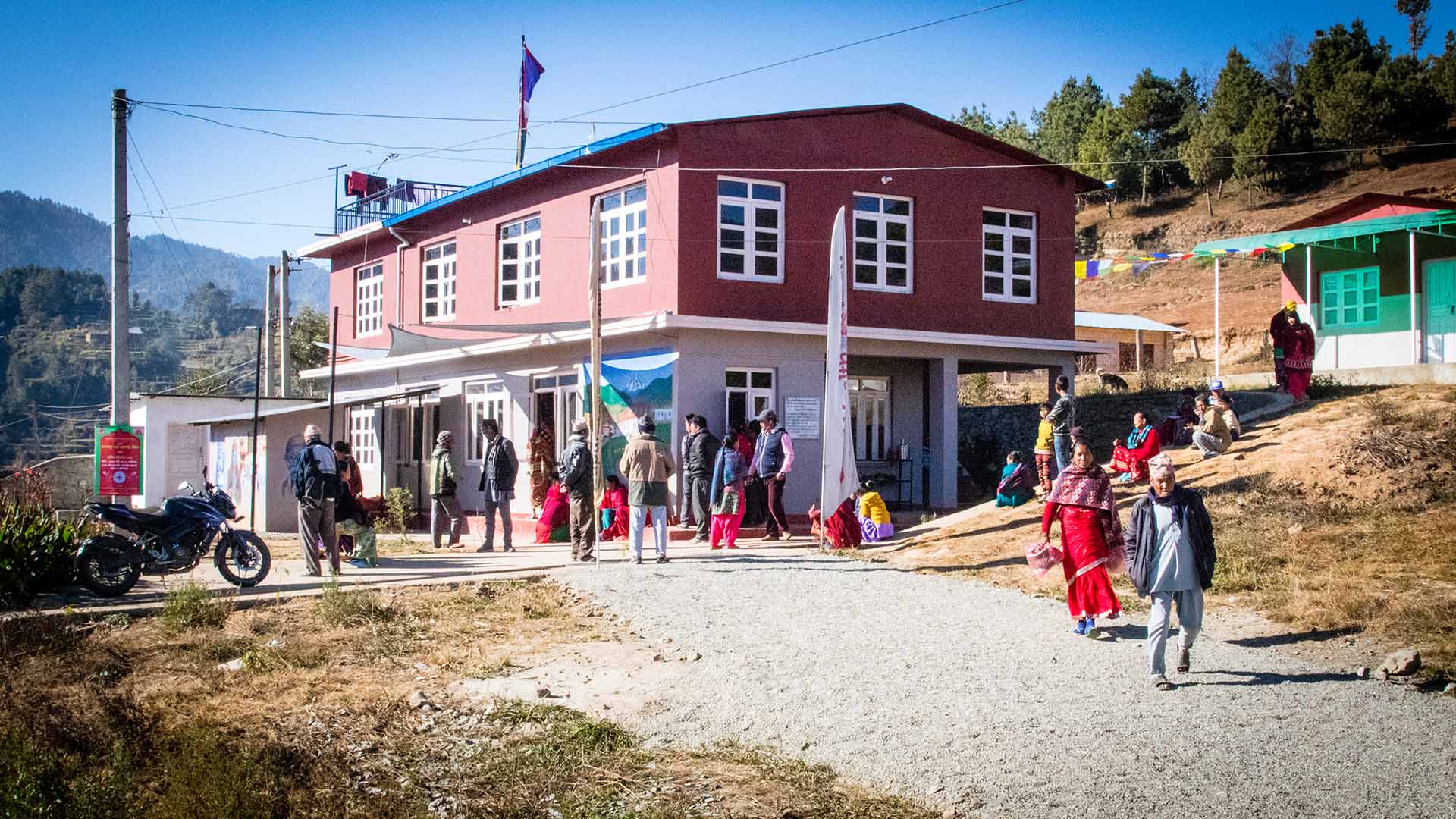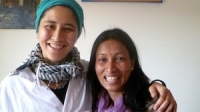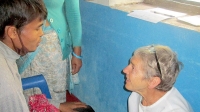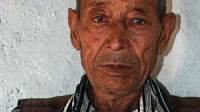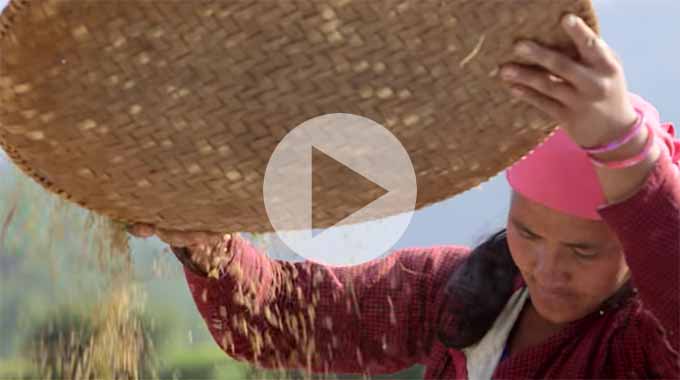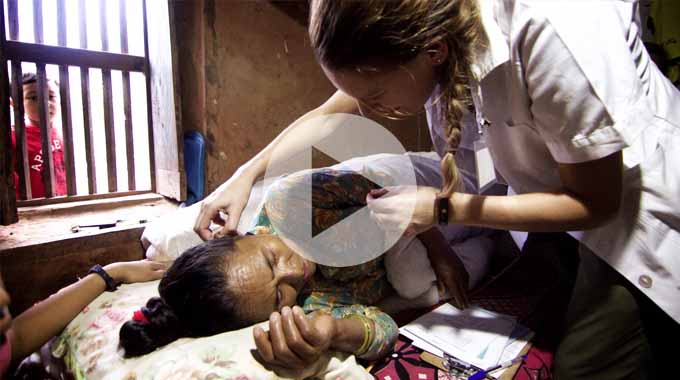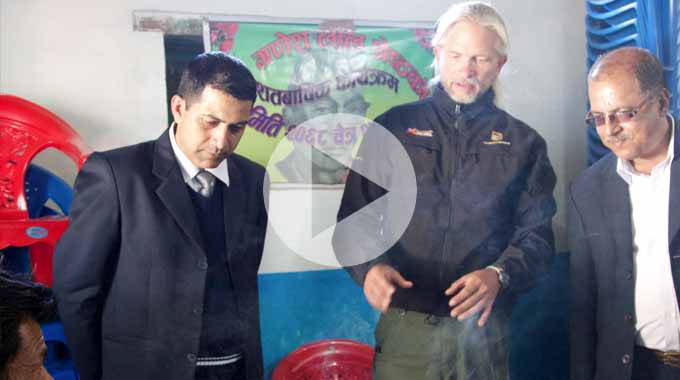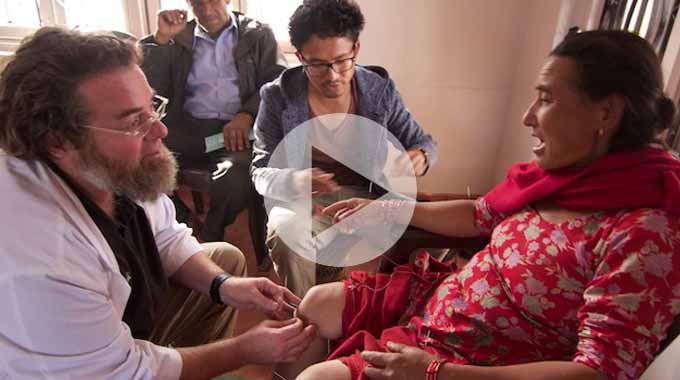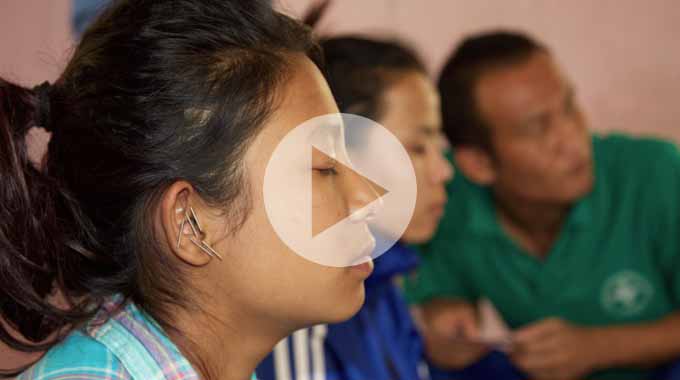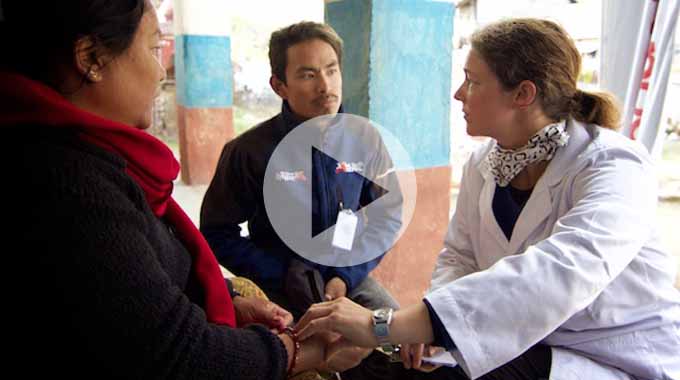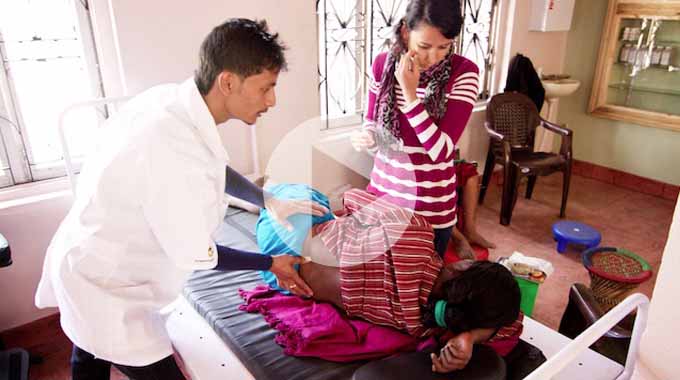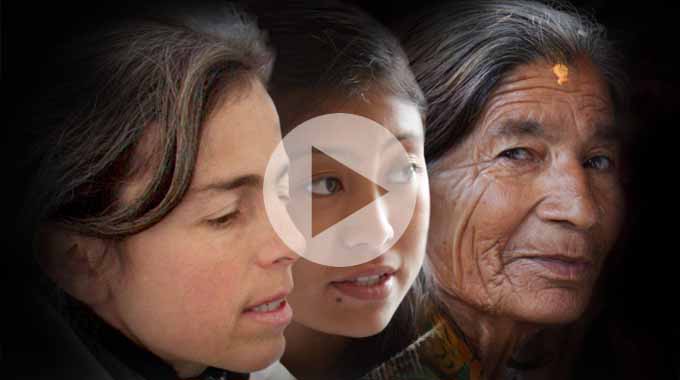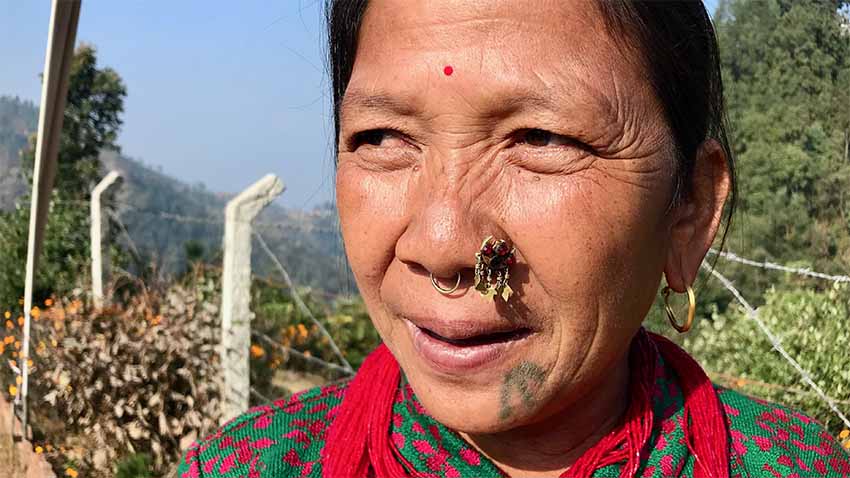
She sat there like a queen, or a dictator, regally poised in a red plastic chair, her gold-tasseled nose ring eclipsed by her broad nose. Faded tattoos traced the corners of her chin in the shapes of upside down “E”s — symbols she later said have no meaning. Wisps of silver hair framed her face and pulled back into a small bun, displaying the sizable golden plates gouged through the centers of her ears. Their worth could be seen in their weight — thick, circular slabs resting uncomfortably on the cleft above her earlobes, a ruby shimmering at the center. The large beaded necklace she wore weighted by a heavy studded golden cylinder indicated she was a married woman. This necklace was the cleanest thing she was wearing, the neon green beads sparkling atop her dirt-laden choli (traditional top).
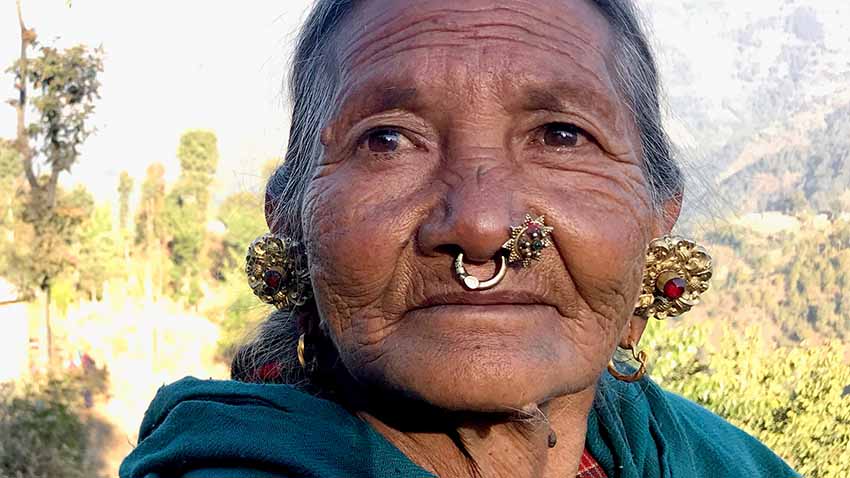
As I approached her, she sat stoic, still. Her vibrantly colored clothes countered the message of her icy demeanor — I felt unsettled by this contradiction, and the air of peculiarity around her. I sat down on my mudha (a brightly colored Nepalese bamboo stool), pretending to finish my previous patient’s chart, and finally looked up. Her eyes pierced mine — strong, sharp, intimidating. She stared at me as if she was sizing me up - all 4’11” of her. For a moment I sized up myself, too. “Namaste” (hello), I said in my best Nepali accent, holding my hands up in prayer at the center of my chest. Before she responded, the interpreter looked from me to her, mimicked my greeting and said, “Lasso” (“lah-so”). To my embarrassment, and subsequent confusion, I learned that this was the proper greeting in Tamang language. My patient, like many of the patients I saw in Tistung, was a Tamang woman.
Tamang Women
She looked at the interpreter, and then at me. Everything next happened in a fraction of a second — she brought her hands together in prayer, she leaned towards me, and she locked her eyes onto mine. “LASSO!” she spat with a loud, raspy voice. She vocalized in a low tenor, which seemed too low for a woman of that stature. I recoiled from the unexpected sound, empathizing with how my young nieces must feel when I come on too strongly after months of being away. She laughed, or rather cackled. I felt self-conscious. Was she was being condescending, saying, “I see your white-ness and I’m leery of what you are doing here”? Then she leaned back and she smiled, revealing her tobacco-stained teeth and exposing the geologic depth of her wrinkles. Her eyes softened in tandem with her body and a sudden sweetness washed over her. Her gesture became inviting and I was pulled back in. “Lasso,” I responded meekly, the sound tasting foreign in my English-trained mouth. She giggled at my pronunciation. I felt embarrassed, but distinctly knew I’d been partially initiated into the intriguing world of Tamang.
Tamang. Like “tah - mahng.” Emphasis on the “tah,” subtle linger on the “ng.” A word I have come to know well, but whose meaning I’ve barely scratched the surface of. Tamang is one of the fifty-nine(ish) ethnic groups scattered throughout Nepal, and is considered one of the indigenous groups of the country. Thought to have originated near the Himalayas, Tamang people now reside throughout various regions of the geographically diverse country, including Tistung, the Tamang dense village in which I lived and worked for four months with the Acupuncture Relief Project. They have their own language, their own culture and customs, and, in my opinion, a range of “eccentric” behaviors that I have come to admire greatly. Especially the women. Especially those seventy-something, true-to-their-culture women. Those no bullshit, work to eat, get shit done women. But we’ll get back to that later.
In The Clinic
The conversation with my patient continued with much more of the same — loud, unapologetic yelling made even louder by her big, boisterous gestures. Just about the time I had acclimated to her roar, she’d shut it down with a sharp, deafening silence. Staccatoed and without warning. That kind of uncomfortable silence that lingers after the terrifying scold of a mother, the precipitating anger left echoing painfully in your soft, delicate insides. She was intimidating in every sense of the word: loud, hard, tough. She didn’t succumb to the “niceties” of a typical Western introduction, that forced pleasantness meant to overshadow the unspoken but palpable fear of making a bad first impression. She was matter-of-fact in a way that was off- putting to me, in her words and in her expressions. She was honest, straightforward, and candid in a way that felt, though irrational, aggressive to me. Unbeknownst to her, she poked at every ounce of nervousness and self-doubt that I carried from the moment I approached her. “Does she already not like me? Is she skeptical of acupuncture? Is she angry that I made her wait too long? What if I can’t help her?...”
But then, in the most unexpected moments, between the oscillations of her animated yelling and penetrating silence, she was soft. She had that lull of a grandmother that left me wanting to crawl up to her and nestle in. A tenderness that felt soothing to my nervousness & self-doubt. A gentleness that made me want to switch roles and be the one to tell her about my worries, my pains so that she could cradle me like grandmas do and powerfully shush those worries away. But just about the time I surrendered into fantasies of hot milk and lullabies, she’d snap me back in with her unanticipated, unequivocal shouting.
Carrying Loads
Though difficult to keep up with her extremes, my inner empath was following along intently, intensely. Sitting across from her was like riding a rollercoaster and I was in the front seat. She was intriguing in her ever-changing states, sparking my curiosity and making relevant again that old Bachelor’s degree in Psychology that I never technically used. “What would the DSM make of her?” I thought. “Bipolar? Dissociative Identity Disorder? ‘Other Specified’?” It took three polite interpreter-hands-to-the-knee for her to pause long enough for me to finally understand what she was telling me about: her chief complaint of "dum" (difficulty breathing). My patient, like many of the patients in Nepal, had COPD. Between the dust, the lack of ventilation over indoor kitchen fires, and the large amounts of exhaust from trucks, many people in Nepal are prone to developing this disease. It didn’t help that she started smoking when she was eight, like many of her Tamang sisters.
Tamang women are like all castes of Nepali women — hard working, care-taking, matriarchs. They are farmers and wives and mothers and workers. Cooks and sisters, and dutiful daughters-in-law. From the long line of women before them, they too step into the inevitable role of mother then grandmother — passing on teachings and ways of life to their loving line of successors. They carry with them that certain kind of grandmotherly wisdom that can only be attained by age and by raising generations. Tamang women are not entirely unlike their Nepali sisters in personality — they possess the sweetness of a Newari, the shyness of a Magar, and the devotion of a Brahman. But they are something else, and so much more.
Me & Them
My patient was not unique to Tamang women. Tamang women are loud. Really, really loud. That kind of loud that left me feeling prone to early onset tinnitus. That high-pitched scratches-on-a-chalkboard type. Though instead of hearing that punishing screech I’ll be hearing YING YING! (achy pain) in their sharp, distinctive tone. Whether it’s to yell at each other from open windows across the tiny town of Tistung, to angrily snap (whilst faking a hit to the bum) at their grandchildren, they get their point across. What I never understood is why their shouting ripples out into casual encounters. Is it to make up for being so tiny? For being deficient in all other forms of “lung qi”? For no reason at all? The sheer volume of their voices goes unnoticed by them (and by that of their used-to-it bystanders), but they scream, reverberating through every vessel until their message is known and their presence is felt. They yell with their whole body, spewing microdroplets of saliva on everything in their periphery, leaving a wake of intensity wherever they go.
Tamang women are strong. Physically, I felt it in the steel pipes that parallel their spine and in their firm upper traps that make an acupuncture needle shy. I felt it in their presence, that harsh stoic air that emanated in a “strictly business” fashion. Though tiny in stature, they channel the very water buffalo they graze: strong, sturdy, steadfast. They are unforgiving like the conditions they live in and they are harsh like a difficult truth. They are calloused by their experience, and from the demands of life that they have been thrust upon them. They are wild, raw, a little uncivilized. Gritty, and fierce with a hint of crude. I suppose these are the results of staying close to the hills. They are messy like the verbal language that they spit -- a drunken mix of z’s and r’s, the tone going high with a *zing then back low to the tenor, all blending together into a sloppy, ongoing stupor. They are dirty — not just in the earthen particles that they wear on their lukgis (traditional skirts) but in their sense of humor, putting locker room talk to shame. So dirty it made my young Tamang interpreter blush. They get shit done, traversing the hills in nothing more than flip-flops, all while wearing 100-lb loads on their backs. They are illiterate, superstitious, even religious. They are hill-dwellers, land pirates, cowgirls of the Wild Wild East. They are tribal -- in the way they walk to clinic in groups, and in the Damphu drum I hear them beating on the nights a Tamang relative has died. Like the spiciness of their “pickle”, and the inebriating stench of their rakshi (fermented liquor), at first they are hard to swallow. But like the extra salt in their food, they leave you thirsty for more.
Through all of this they are resilient, surviving earthquakes and violent husbands, dead children and the thousands of loads that they carry. I see the physical toll they have taken through the burns on their faces, I feel it in the popping of their joints & the fungus on their feet. The prolapse from their seventh birth and the empty gum line from the multiple teeth they’ve pulled.
Tamang Homes
Over the course of our treatments, I learned much more about my patient than just her health history and, to my later elation, her improving vitals. The more I pried the more she shared about her life — how many goats she had, what she typically “ate” for breakfast (often corn beer in a thick, porridge-y sludge), and how her father died when she was a teenager, the latter revealed with as much candidness as when she told me about her breakfast. I learned about her daughter that walked her to clinic, whom I always saw waiting patiently outside in a squat position over the dusty, grassless ground. Through her stories, and those of the other Tamang women I treated, I learned more and more words in Tamang: swaba (pain), suntala (orange), the names given to describe the order of children in a Tamang family — Thuli, Maili, Kanchi … My pronunciation was improving as well, which left me feeling delighted and eager to say ‘Lasso’ at any opportunity, a moment always evoking the same amount of amusement from the Tamang woman at the other end.
My relationship with Maili deepened and a sense of trust was established. The more I learned about her and the more I met her closer to her world, the more she let me in. This was the case with all the Tamang women that I treated. First it was letting me touch their thighs, later it was treating their grandchildren. I saw their tender, loving nature. Their sweetness and the vulnerability that they don’t disclose freely. Like the toughest skin they, too, soften under the right conditions. They brought me spinach and they invited me over for tea and they told me they loved me. They entrusted me with their healthcare and they called me their doctor. They cried when I left.
Our Crew
It’s been almost a week since I returned to my home in Portland. Here I sit, picturing these women through my rain-glazed living room windows. My Tamang friends feel a world, and a lifetime, away. Right before I left I asked one of my patients what makes her proud to be Tamang. She looked at me with a perplexing look and in that classic Tamang frankness she responded, “We work, we eat, we die.” But what I’ve realized is that within all of that they live, and they live a powerful message -- for me, for the women of the West, for all women. They weren’t teaching me how to be more Tamang, rather, they were reminding me of the inner Tamang that I have possessed all along, that we all possess. We may all have the “heart of a Buddha”, but somewhere underneath the veil of niceties and the layers of domestication we have the gut of a Tamang woman. Strong, fierce, powerful. Innately as our birthright. It is not something to be searched for or achieved, to be found or to be waited for. It is there for us to reclaim it, to demand it out of ourselves like a queen (or a dictator) with regal, rightful authority. Without apology. ---Mallory Harman
